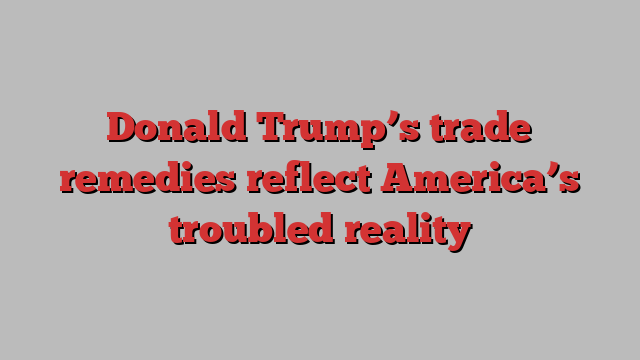
Unlock the US Election Countdown newsletter for free
The stories that matter on money and politics in the race for the White House
The writer was the US trade representative in the Trump administration
Critics of Donald Trump’s popular tariff proposals claim they will be inflationary and harm the economy. The fact that this never happened during Trump’s first term, when we raised tariffs, is reason enough to be sceptical of such criticisms. But the problems with them go deeper. Few of those who criticise these tariffs stop to consider what the brand of free trade they have promoted has done to America and to American workers over the past 30 years.
In the past three decades we have lost millions of jobs, many of them high- paying manufacturing ones. We have seen median wages stagnate, except for a period during Trump’s administration. Communities across America have been destroyed. The two-thirds of our workforce with only high school diplomas live on average over eight years less than college graduates.
We have also seen a growth in income and wealth inequality that is alien to America. The top 1 per cent of our citizens now have more wealth than the middle 60 per cent — another first. In the past 60 years, families in the top 1 per cent have seen their wealth grow from 36 times that of families at the 50th percentile to 71 times their wealth.
At the macroeconomic level the results have been equally alarming. We have run up giant trade deficits every year for decades. This transfers trillions of dollars of our wealth overseas in return for current consumption. Staggeringly, foreigners now own over $22tn more of American assets than Americans own throughout the world.
We are also losing the future innovation that goes with manufacturing. We’ve essentially lost the nuclear, electronics, textiles, and chemicals industries. I could go on and on. Innovation has lagged too. The Australian Strategic Policy Institute found that the US is behind China in 57 of 64 critical technologies.
Economic growth has also slowed. In the two decades before 1980 our economy grew faster than 3 per cent in 14 separate years. In the period between 1980 and 2000 it exceeded 3 per cent another 14 times. Since 2000 that has only happened three times and one was the abnormal Covid recovery year.
The trading system is not the only culprit in this tragedy, but it is a major one. Economists’ free trade prescriptions fail because they do not reflect modern reality. Classical economists told us that a country exports in order to import. That is how it gets the “trade benefit” — Portuguese wine for English woollens per Adam Smith. We got the theory of comparative advantage from David Ricardo — a country produces what market forces say it makes best, not everything.
Yet, what we have seen in recent decades is countries adopting industrial policies that are designed not to raise their standard of living but to increase exports — in order both to accumulate assets abroad and to establish their advantage in leading edge industries. These are not the market forces of Smith and Ricardo. These are the beggar-thy-neighbour policies that were condemned early in the last century.
Countries that run consistently large surpluses are the protectionists in the global economy. Others, like the US, that run perennial huge trade deficits are the victims. They end up trading their assets and the future income from those assets for current consumption. Many economists will say this is all the fault of the victim, and that the US has too low a savings rate. Of course the trade deficit is equal to the difference between a country’s investment and its savings, but the causation runs the other way. Foreign industrial policy creates the deficits and with investment being set by demand for domestic investment, savings must go down. The problem is not the concomitant savings rate. It is the predatory industrial policies.
Facing a system that is seriously failing our country, Trump has decided that action must be taken. There are essentially three ways to bring about fairness and balance, and so help businesses and workers. First, the US could impose a system of import/export certificates. Second, it could legislate a capital access fee on inbound investment, meaning that buying up our assets would be more expensive. Or, finally, the US could use tariffs to offset the unfair industrial policies of the predators.
We know from the first Trump administration that the last of these remedies works. Manufacturing was up, imports were trending down pre-Covid and workers had the highest real wage increase on record. It is time for a change. Our trading partners, particularly those with large trade surpluses, shouldn’t blame us for shifting policy. We would be merely responding to the harm they have caused.